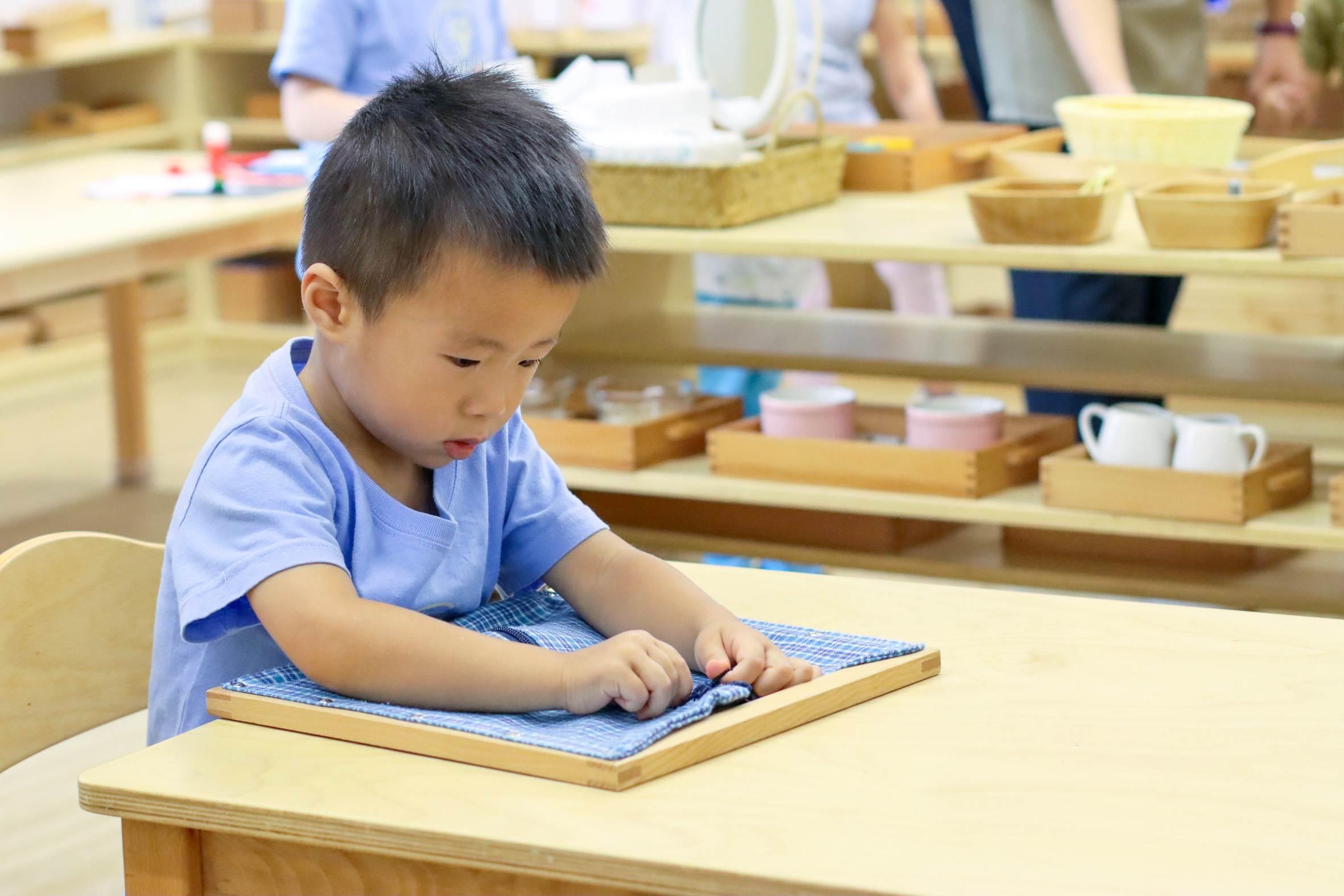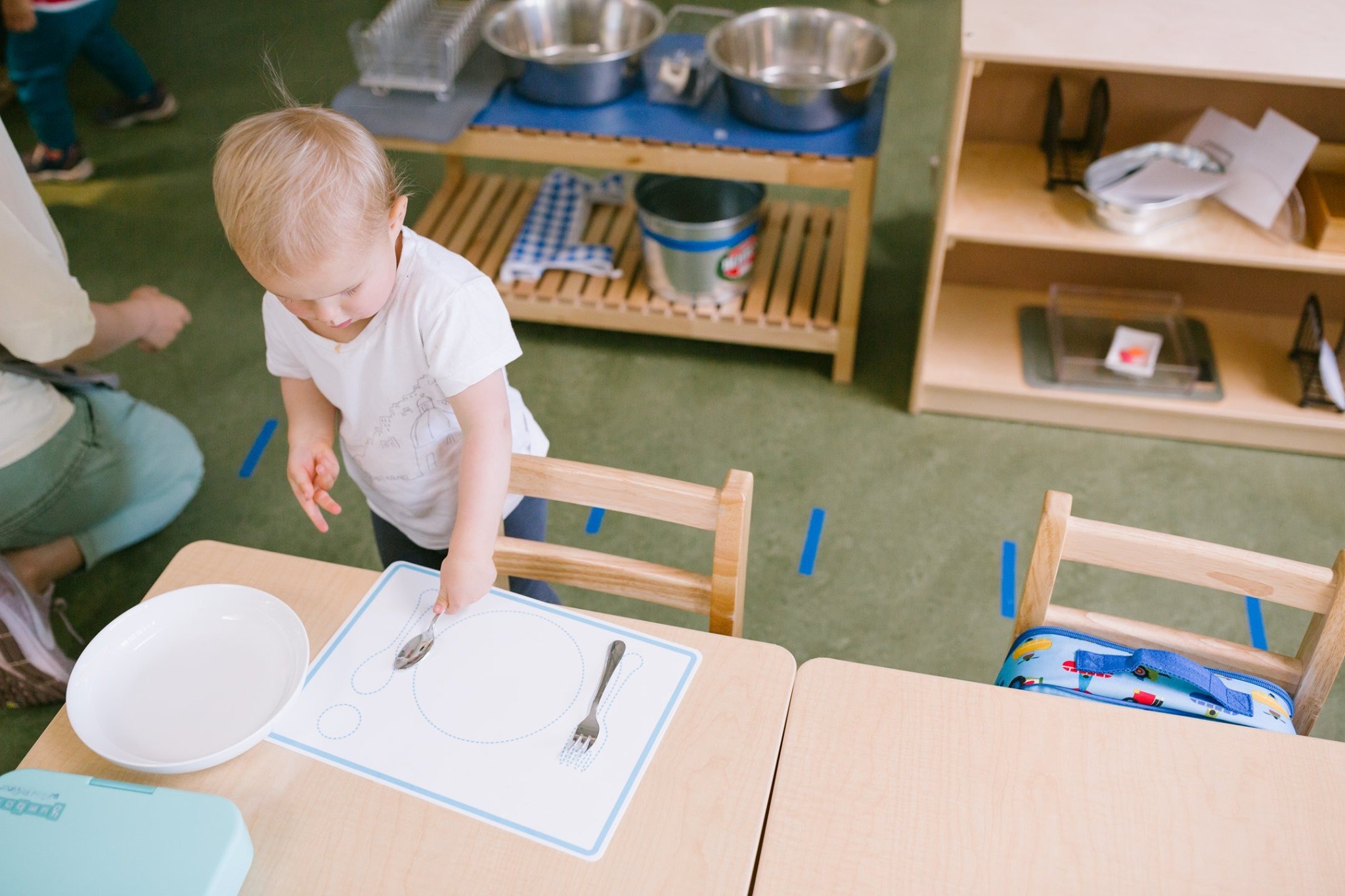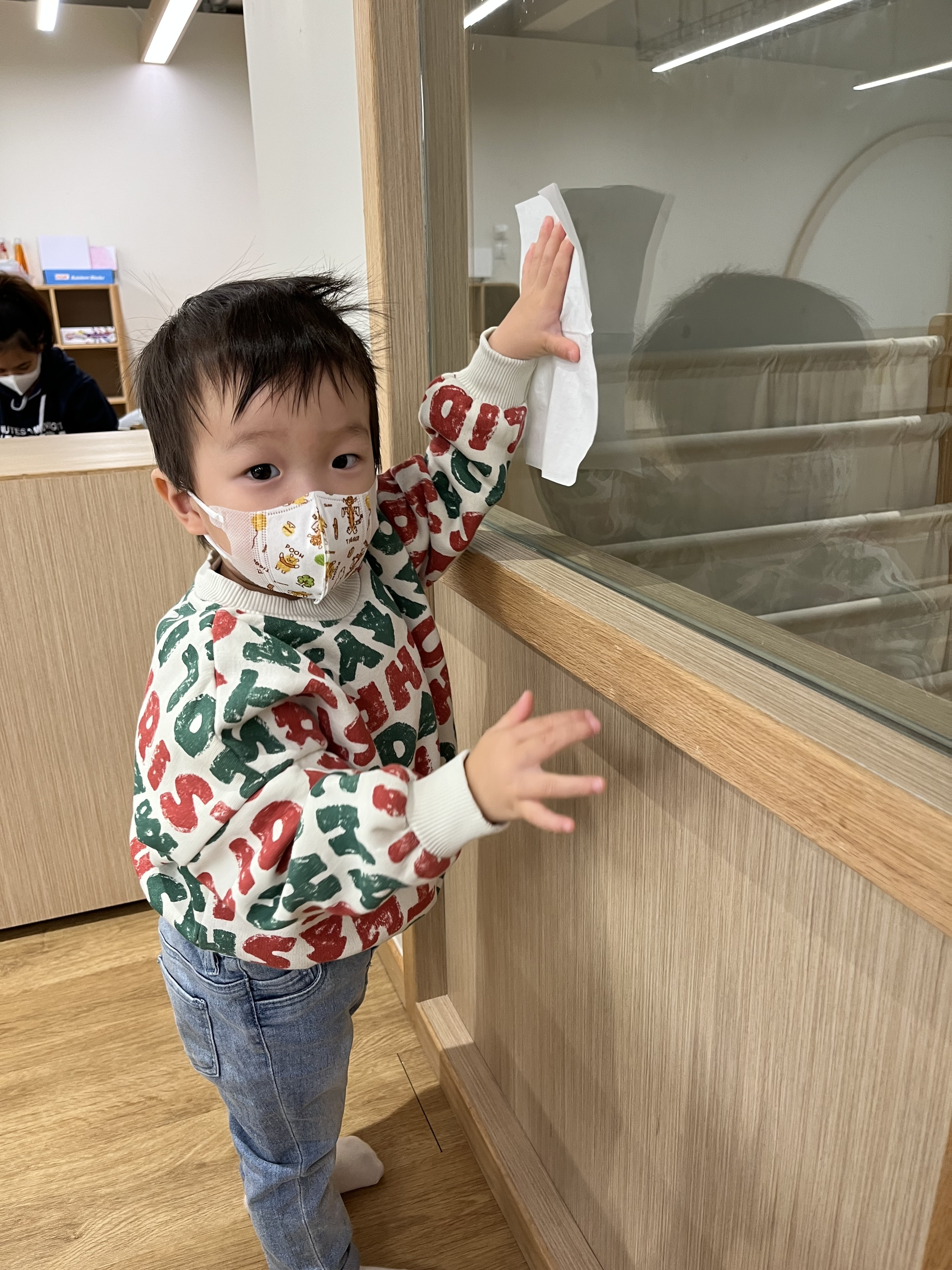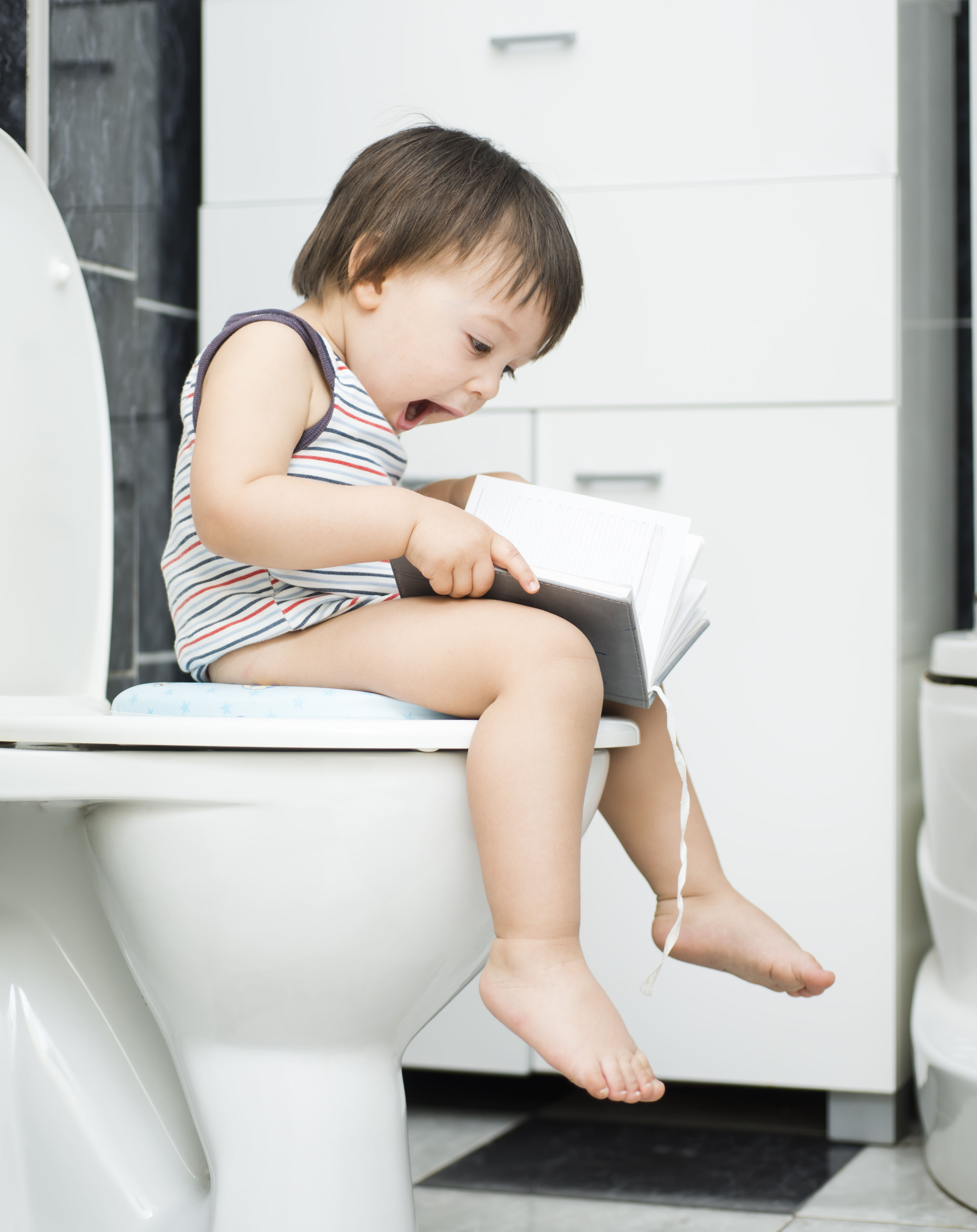
Toddler

Program Highlights
Movement is a crucial part of how children learn, not a break from learning. This is especially true under age six, and our program offers fine and gross motor activities daily. These activities support your toddler in learning to understand cause and effect, solve problems, make choices, and pursue goals.

With deliberate exposure to real, precise and varied vocabulary, your toddler will go from two-word phrases to full sentences. Children experience reduced frustration as they learn to express ideas and feelings in words. Meanwhile, this thoughtful approach to language prepares your little one for reading and writing.
Toddlers love real-world tasks like mopping and window washing, and these activities are encouraged with guidance and appropriately sized tools. Practical life helps toddlers contribute to their community, build confidence, and fulfills their drive to understand how things work. It also develops their capacity to concentrate, which is key to later academics.
We support independent toilet use with respect and patience. Montessori guides watch for signs of readiness and motivate without pressure. Child-size bathrooms remove obstacles; familiar routines facilitate a positive experience.

One of the most exciting things about working with toddlers is watching them begin to interact, play, and socialize with their peers. Our guides model respectful social interactions, capitalizing on the toddler’s delight in imitation. Formal lessons in grace and courtesy further equip toddlers with social skills and empathy.
Toddler Curriculum
Can choose meaningful work most of the time
Able to show a level of independence in their work most of the time
Art appreciation
Drawing, painting, collage (open ended)
Scissors use
Displays awareness of body with relation to surroundings Able to walk carrying objects safely without falling
Able to follow instructions for movement activities
Aware of the spatial relationship of objects in the environment
Works on some simple food preparation activities with minimal support
Able to use simple kitchen implements like a blunt knife or chopper, spreader, tongs, etc.
Refining of fine motor control
Uses both hands when working on an activity
Can transfer objects through pouring, scooping, squeezing, tonging, placing, etc., with little clean up necessary
Able to identify basic colors
Develops awareness of different sensorial aspects in the world around them, such as long and short, rough and smooth, heavy and light, etc.
Develops awareness of the natural world around them, such as early botany, weather, etc.
Develops awareness of the animal classification and qualities of birds, fish, mammals, etc.
Begins sorting into categories
Able to name basic shapes
- Demonstrates curiosity and positive attitude toward work
- Perseveres at tasks
- Receptive to lessons and repeats them independently
- Purposeful in work
- Demonstrates orderly work habits
- Responds to redirection
- Demonstrates basic Grace and Courtesy, such as waiting one's turn to speak
- Becomes aware of bodily functions and begins to use the toilet independently
- Able to feed themselves independently using utensils
- Able to help set the table and prepare food items for mealtime
- Beginning to speak in full sentences
- Communicates needs and wants verbally most of the time
- Working on enriching vocabulary
- Able to follow oral instructions most of the time
- Able to have a two-way conversation
- Begins to utilize three finger pencil grip when using writing instruments
- Singing, rhythm activities
- Music appreciation
- Begins having an awareness of numbers through books and exposure
- Begins to understand 1:1 correspondence
- Begins to count numbers using the correct sequence
- Notices patterns and repetition
- Demonstrates awareness of size and quantity
Sample Half Day Schedule
*Schedule varies by program & locationAll children arrive, greet their guide, wash hands, change shoes and choose work.
Children choose work based on program curriculum. They choose individual work or small group work; the guide presents individual or small group lessons.
Children wash hands and enjoy snacks with a friend. They sit with different partners each day, enjoying everyone’s company in the classroom while eating their snack.
Free play, organized games,. Children engage in purposeful gross motor activities using a vareity of physical education tools.
Guide read stories, sings songs and leads language games with children.
Children prepare for dismissal.
Inquire Now
Complete this brief form and our team will get in touch



